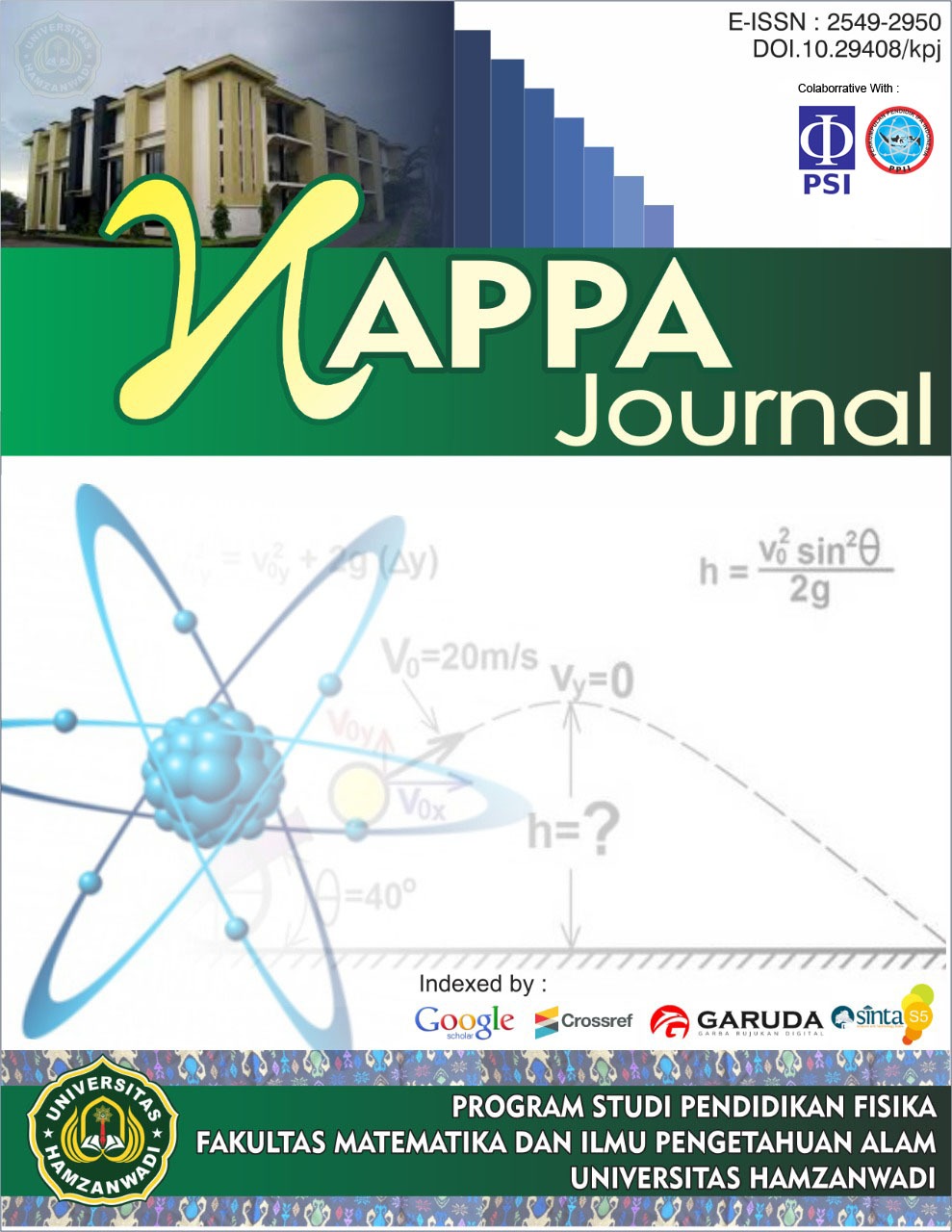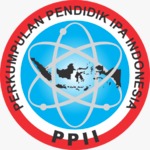Enhancing High School Students’ Problem-Solving Skills in Rotational Dynamics through SPARK Model
DOI:
https://doi.org/10.29408/kpj.v9i1.30542Keywords:
Problem-solving skills, Poject-based Learning, STEM, SPARK modelAbstract
The purpose of this study was to enhance high school students’ problem-solving skills in rotational dynamics through the STEM-Project Approach for Real-World Knowledge (SPARK) model. The study employed a quasi-experimental design with a one-group pre-test and post-test approach to measure the progress of 30 first-year students (15 males and 15 females) from a high school in Bandung, Indonesia. Validated twenty-four essay questions was used to assess students' problem-solving abilities before and after the intervention. The results demonstrated moderate improvements in problem-solving skills, with significant advancements in problem identification (N-Gain: 0.59) and the application of scientific concepts (N-Gain: 0.53), while less improvement was observed in suggesting alternative solutions (N-Gain: 0.23) and designing tools (N-Gain: 0.16). The study, analyzed through portfolios and normalized gain values, indicated medium-category increases in some aspects of problem-solving skills. It can be concluded that the SPARK model is effective in enhancing high school students' problem-solving skills in rotational dynamics, particularly in improving the identification of problems and their relation to physics concepts. However, the model was less effective in improving the design aspect, indicating the need for further development in this area. Future research should focus on creating worksheets that better align with these problem-solving indicators.
References
Bell, S. (2010). Project-Based Learning for the 21st Century: Skills for the Future. The Clearing House: A Journal of Educational Strategies, Issues and Ideas, 83(2). https://doi.org/10.1080/00098650903505415
Bybee, R. W. (2013). The case for STEM education: Challenges and opportunities.
Chistyakov, A. A., Zhdanov, S. P., Avdeeva, E. L., Dyadichenko, E. A., Kunitsyna, M. L., & Yagudina, R. I. (2023). Exploring the characteristics and effectiveness of project-based learning for science and STEAM education. Eurasia Journal of Mathematics, Science and Technology Education, 19(5). https://doi.org/10.29333/EJMSTE/13128
Feltovich, P. J., & Coulson, R. L. (1993). Learning Teaching,and Testing for Complex Conceptual Understanding. In: N. Frederiksen, R. Mislevy & I. Bejar (Eds.), Test theory for a new generation of tests. In Test Theory for A New Generation of Tests.
Firman, H. (2015). Pendidikan Sains Berbasis STEM: Konsep, Pengembangan, dan Peranan Riset Pascasarjana. Seminar Nasional Pendidikan IPA Dan PLKH Universitas Pakuan, Agustus.
Fitriani, A., Zubaidah, S., Susilo, H., & Al Muhdhar, M. H. I. (2020). The effects of integrated problem-based learning, predict, observe, explain on problem-solving skills and self-efficacy. Eurasian Journal of Educational Research, 2020(85). https://doi.org/10.14689/ejer.2020.85.3
Frey, R. F., McDaniel, M. A., Bunce, D. M., Cahill, M. J., & Perry, M. D. (2020). Using students’ concept-building tendencies to better characterize average-performing student learning and problem-solving approaches in general chemistry. CBE Life Sciences Education, 19(3). https://doi.org/10.1187/cbe.19-11-0240
Funke, J., Fischer, A., & Holt, D. V. (2018). Competencies for Complexity: Problem Solving in the Twenty-First Century. https://doi.org/10.1007/978-3-319-65368-6_3
Gurat, M. G. (2018). Mathematical problem-solving strategies among student teachers. Journal on Efficiency and Responsibility in Education and Science, 11(3). https://doi.org/10.7160/eriesj.2018.110302
Hake, R. R. (1998). Interactive-engagement versus traditional methods: A six-thousand-student survey of mechanics test data for introductory physics courses. American Journal of Physics, 66(1). https://doi.org/10.1119/1.18809
Hughes, S., Evason, C., Baldwin, S., Nadarajah, H., Leisemann, S., & Wright, S. (2020). STEM takes flight. Physics Education, 55(2). https://doi.org/10.1088/1361-6552/ab5ced
Kelley, T. R., & Knowles, J. G. (2016). A conceptual framework for integrated STEM education. In International Journal of STEM Education (Vol. 3, Issue 1). https://doi.org/10.1186/s40594-016-0046-z
Martawijaya, M. A., Rahmadhanningsih, S., Swandi, A., Hasyim, M., & Sujiono, E. H. (2023). The effect of applying the Ethno-STEM-Project-based learning model on students’ higher-order thinking skill and misconception of physics topics related to Lake Tempe, Indonesia. Jurnal Pendidikan IPA Indonesia, 12(1), 1–13.
Mutakinati, L., Anwari, I., & Yoshisuke, K. (2018). Analysis of students’ critical thinking skill of middle school through stem education project-based learning. Jurnal Pendidikan IPA Indonesia, 7(1). https://doi.org/10.15294/jpii.v7i1.10495
Niemi, K. (2021). ‘The best guess for the future?’ Teachers’ adaptation to open and flexible learning environments in Finland. Education Inquiry, 12(3). https://doi.org/10.1080/20004508.2020.1816371
Özyurt, Ö. (2015). Examining the critical thinking dispositions and the problem solving skills of computer engineering students. Eurasia Journal of Mathematics, Science and Technology Education, 11(2). https://doi.org/10.12973/eurasia.2015.1342a
Parno, Yuliati, L., Hermanto, F. M., & Ali, M. (2020). A case study on comparison of high school students’ scientific literacy competencies domain in physics with different methods: PBL-stem education, PBL, and conventional learning. Jurnal Pendidikan IPA Indonesia, 9(2). https://doi.org/10.15294/jpii.v9i2.23894
Prasad, S., Dhundi, D., Giri, R., & Bagale, S. (2017). Developing 21st Century Skills Through Project-Based Learning in EFL Context: Challenges and Opportunities. The Online Journal of New Horizons in Education, 7(1).
Purwaningsih, E., Sari, S. P., Sari, A. M., & Suryadi, A. (2020). The effect of stem-pjbl and discovery learning on improving students’ problem-solving skills of the impulse and momentum topic. Jurnal Pendidikan IPA Indonesia, 9(4). https://doi.org/10.15294/jpii.v9i4.26432
Rausch, A., & Wuttke, E. (2016). Development of a multi-faceted model of competence and its acceptance by different stakeholders in the business domain. Unterrichtswissenschaft, 44(2).
Shanta, S., & Wells, J. G. (2022). T/E design based learning: assessing student critical thinking and problem solving abilities. International Journal of Technology and Design Education, 32(1). https://doi.org/10.1007/s10798-020-09608-8
Simanjuntak, M. P., Hutahaean, J., Marpaung, N., & Ramadhani, D. (2021). Effectiveness of problem-based learning combined with computer simulation on students’ problem-solving and creative thinking skills. International Journal of Instruction, 14(3). https://doi.org/10.29333/iji.2021.14330a
Sinha, T., & Kapur, M. (2021). When Problem Solving Followed by Instruction Works: Evidence for Productive Failure. Review of Educational Research, 91(5). https://doi.org/10.3102/00346543211019105
Solihah, P. A., Kaniawati, I., Samsudin, A., & Riandi, R. (2024). Prototype of Greenhouse Effect for Improving Problem-Solving Skills in Science, Technology, Engineering, and Mathematics (STEM)-Education for Sustainable Development (ESD): Literature Review, Bibliometric, and Experiment. Indonesian Journal of Science and Technology, 9(1). https://doi.org/10.17509/ijost.v9i1.66773
Solihin, A., Wibowo, F. C., & Astra, I. M. (2021). Review of trends project based learning (PjBL) integrated STEM in physics learning. Journal of Physics: Conference Series, 2019(1). https://doi.org/10.1088/1742-6596/2019/1/012031
Sternberg, R. J., & Kibelsbeck, J. G. (2022). Teaching musical learning as problem-solving: Applying a theory of musical intelligence to musical instruction. Psychology of Music, 50(5). https://doi.org/10.1177/03057356211055215
Sulaeman, N., Efwinda, S., & Putra, P. D. A. (2022). Teacher Readiness In Stem Education: Voices Of Indonesian Physics Teachers. Journal of Technology and Science Education, 12(1). https://doi.org/10.3926/jotse.1191
Sulaiman, F., Rosales, J. J., & Kyung, L. J. (2023). THE Effectiveness Of The Integrated Stem-Pbl Physics Module On Students’ Interest, Sensemaking And Effort. Journal of Baltic Science Education, 22(1). https://doi.org/10.33225/jbse/23.22.113
Uden, L., Sulaiman, F., Ching, G. S., & Rosales, J. J. (2023). Integrated science, technology, engineering, and mathematics project-based learning for physics learning from neuroscience perspectives. Frontiers in Psychology, 14. https://doi.org/10.3389/fpsyg.2023.1136246
van Laar, E., van Deursen, A. J. A. M., van Dijk, J. A. G. M., & de Haan, J. (2020). Determinants of 21st-Century Skills and 21st-Century Digital Skills for Workers: A Systematic Literature Review. In SAGE Open (Vol. 10, Issue 1). https://doi.org/10.1177/2158244019900176
Downloads
Published
Issue
Section
License
Copyright (c) 2025 Kappa Journal

This work is licensed under a Creative Commons Attribution-ShareAlike 4.0 International License.
Semua tulisan pada jurnal ini menjadi tanggungjawab penuh penulis. Jurnal Kappa memberikan akses terbuka terhadap siapapun agar informasi dan temuan pada artikel tersebut bermanfaat bagi semua orang. Jurnal Kappa dapat diakses dan diunduh secara gratis, tanpa dipungut biaya, sesuai dengan lisensi creative commons yang digunakan








